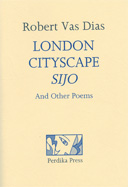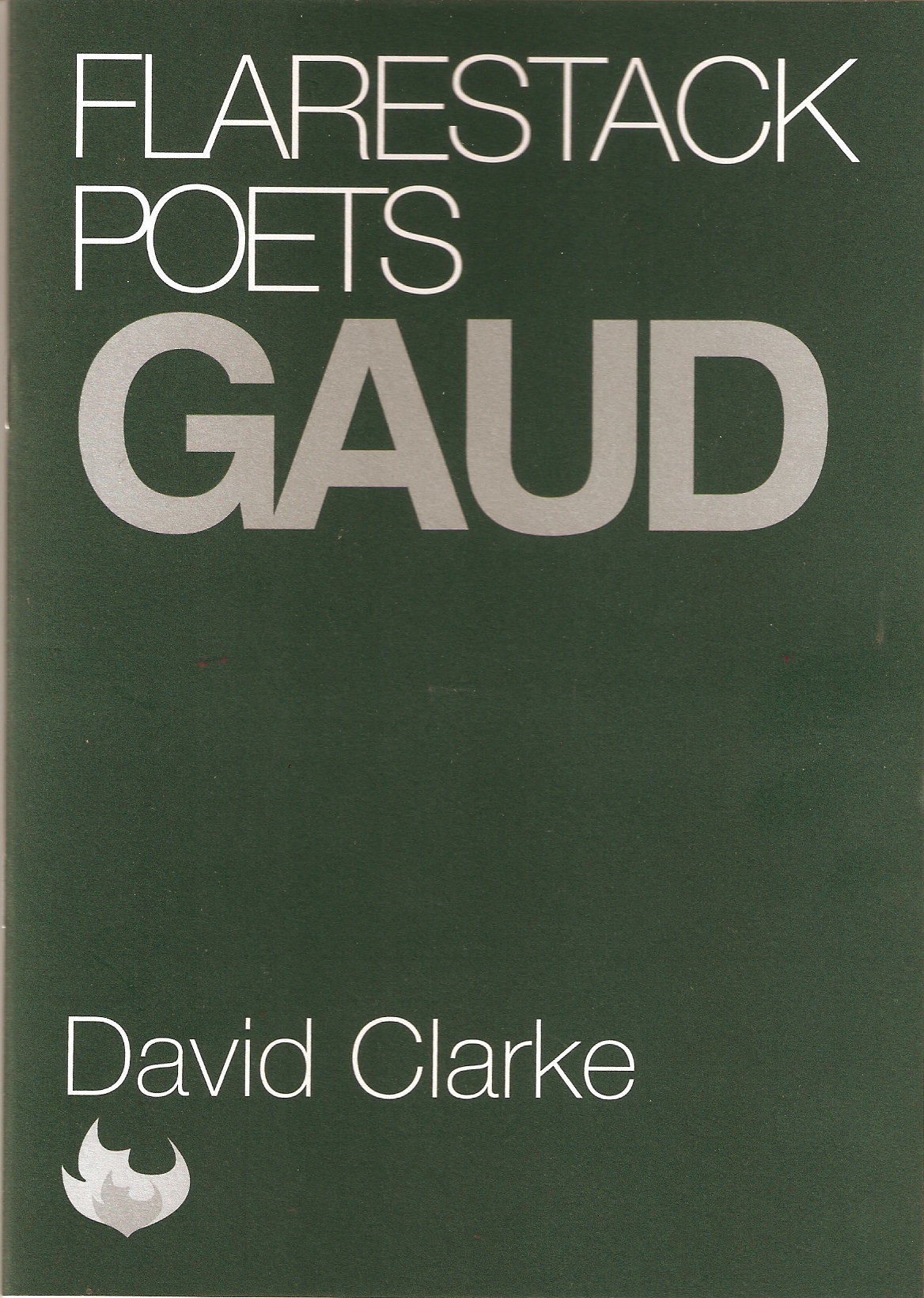‘London Cityscape Sijo And Other Poems’ by Robert Vas Dias
-Reviewed by Paul McMenemy–
As Robert Vas Dias points out, many Korean poets treat the conventions of sijo form selectively; working within a centuries-old tradition understood by their readers, they can subvert or reshape it as they like. Most readers of “London Cityscape Sijo”, unaware of these conventions, and where Vas Dias departs from them, will only see that he has written a sequence of 21 similar-looking poems. Sijo are three-line poems, each line containing four stress-centred syllabic parcels and a caesura (like an Old English distich, sans alliteration); the last line should contain a volta; the whole should come to a syllable count in the mid-forties (some leeway is allowed). Here, these rules are observed or ignored as is convenient – poem 5 even runs to two stanzas – akin to writing a narrative in run-on haiku. Poem 10, “Balloon Variations”, also contains more than one stanza, but in this case, as the title suggests, each is self-contained: indeed, the poet appears to have written the same poem three times, and been unable or unwilling to decide which was best. In his notes, the author tells us that he only settled on the sijo form some way into the writing process; I suspect that 5 was written before this point, and would be happier in another format.
This superficial formal continuity need not be an insuperable problem, however, providing the sequence is tonally consistent. Have you ever read a haiku and thought, “It’s amazing how little can be said in seventeen syllables”? Western readers of eastern poetry often forget that it includes a wealth of cultural and literary allusion which cannot be conveyed in the body of a translation. Failure to understand this can lend a pseudo-Zen naivety to western essays in eastern forms. Vas Dias does not always avoid this, describing “poetic” experiences, rather than making poetry of experience: the “Balloon” poems mentioned above are examples of this; another is the first poem in the sequence, reprinted below. I would suggest that your reaction to this will give you a notion of your likely attitude to the whole:
‘A Canada goose walks down
my street, does not fly, he
steps aside to let cars pass by,
we bring him milk-soaked bread,
the churchwarden and I, which
he finishes. Then he flies.’
Rhythmically, it has an engaging haltness; the honking internal rhymes will not suit all tastes, but, again, they lend an auditory interest to the poem. Beyond this, however, it is difficult to see what to take from the poem. I do not doubt that it was a personally moving experience for the poet, as any interaction with a wild creature must now be, but I am uncertain he successfully conveys this to the reader, let alone any larger point about human gratitude and animal indifference.
As Vas Dias says, sijo allows the poet room to be “more subjective, lyrical, and personal” than the popular Japanese forms. When this works, it can be really exciting – the beautiful descriptive burst of haiku, but with an authorial investment which carries the reader inside the experience, as seen in poem 14; or poem 9, below:
‘Two stately Buck Mulligan
police horses clattering
on the tarmac, their long equine
faces I look up to, like
fathers, make me feel lower,
that I’m up to something.’
A nice piece of Freudianising. But if barmen are poorly-paid therapists, in this instance any trained bartender would ask, “Why the long equine face?” It appears the loose sijo form is here slightly too baggy – the poet needs a two-syllable adjective to fill it out and tautology be damned.
Also, “personal” does not necessarily mean original: poem 19, “Oasis in the Park, Highbury Fields” begins with “Yummy mummies sipping lattes”, takes in “designer dogs” before concluding sniffily, that this is “a certain sign of what passes / here as spring in the city.” Take that, matrons of Hampstead! Redundant satire aside, this poem highlights a larger problem with the sequence: its title contains the only place-name in all of “London Cityscape Sijo”. Almost every poem could take place, not only in any other city in Britain, but any other suburb. It has no sense of place, which would be fine, if the piece was called “Suburban Sijo”; but the poem is advertised as being not only place-specific, but actively topographical in intent.
Speaking of titles, the “And Other Poems” in this collection, occupying the second half of the pamphlet, feel very much that, trailing in the wake of the main feature. Designated “Poems Integrating Quoted Text”, two are straight cut-ups, others incorporate only a few lines or words of quoted text, and one merely takes inspiration from its “text” without directly quoting it at all. The most successful is probably “Some of the Notes Were Tricky – Stage 3”, a cut-up of a newspaper article about an art installation in which people impersonate birds, which produces its own twittering, edge-of-meaning effect.
This is illustrative of the strengths and weaknesses of the whole: whilst often sonically effective, it rarely signifies: Sijo 20, with its clever footstep/heartbeat rhythm, but negligible nutritional value, is characteristic. The final poem of the collection, “Waves”, begins similarly:
‘Dream still body-
surfing crests of wave
ecstasy of hoist and thrust
foam-rush pummel
to skin-scraping shore’
Evocative enough, but never surprising. At half-way it introduces the idea that now, in old age, exhilaration has been replaced with fear of “broken bones, or worse.” And so,
‘the dream become Sendai,
Aceh tsunami nightmare,
lofting houses off foundations,
cars, boats, bodies tossed
in black waters’
The analogy seems off, tasteless. Yet the metaphor is subjectively accurate – old age is a natural disaster – but it does not feel earned: nothing in the previous thirty pages of risk-free audio entertainment has prepared for it. The problem is not that the reader is made to question what poetry is allowed to do, but that he is only made to do so in the pamphlet’s final lines.






Pingback: I have seen the sea | Poetry Monthly